Whether you’re a longtime vegan or just a curious omnivore, meat-free dining in Japan is always an adventure
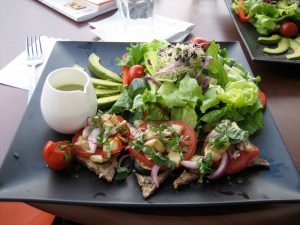 Impossible. Depressing. Infinitely frustrating. The worst two weeks of my life. These are just some of the phrases visiting vegetarians and vegans have characteristically used to describe their experiences in Japan. It’s a paradox. The Japanese diet does not appear to contain much meat, yet animal products seem to sneak their way into almost every dish here. It’s not uncommon for Japanese restaurants in the West to have vegetarian options, yet things like “teriyaki tofu” are virtually unheard of in Japan. The country’s Buddhist leanings would also seem to indicate that vegetarians would be welcomed and accommodated, yet they’re often ostracized and misunderstood. So what gives?
Impossible. Depressing. Infinitely frustrating. The worst two weeks of my life. These are just some of the phrases visiting vegetarians and vegans have characteristically used to describe their experiences in Japan. It’s a paradox. The Japanese diet does not appear to contain much meat, yet animal products seem to sneak their way into almost every dish here. It’s not uncommon for Japanese restaurants in the West to have vegetarian options, yet things like “teriyaki tofu” are virtually unheard of in Japan. The country’s Buddhist leanings would also seem to indicate that vegetarians would be welcomed and accommodated, yet they’re often ostracized and misunderstood. So what gives?
Is bacon a vegetable?
One basic problem seems to be a linguistic one. In English, tell someone you don’t eat “meat” and they’ll generally assume that your diet also eliminates chicken, ham, and anything else that once had a face. But ask for something without “niku” in Japanese, and at least half the time it will still come with a hearty helping of bacon. There are also plenty of restaurants and dishes that purport themselves to be “vegetable,” neglecting to mention that they just mean they serve vegetables… in addition to meat.
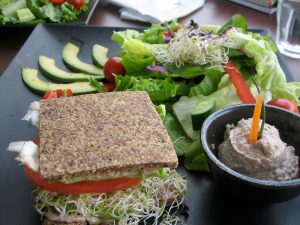 Even if restaurant staff understand your question, they may not quite get the motivation behind it. Earl Brawley, founder of the Tokyo Vegan Meetup, relays how when one friend asked if a dish contained meat, he was told “Yes, but you can’t see it,” as though invisible meat would somehow be less offensive than the visible variety!
Even if restaurant staff understand your question, they may not quite get the motivation behind it. Earl Brawley, founder of the Tokyo Vegan Meetup, relays how when one friend asked if a dish contained meat, he was told “Yes, but you can’t see it,” as though invisible meat would somehow be less offensive than the visible variety!
Herwin Walravens, author of the Japan Vegan Restaurant Pocket Guide, wonders if this might also have something to do with the Japanese desire to please people and avoid saying no. He explains, “Japanese people in general try to be pleasing to foreigners, right? So if it is obvious that you are vegan or vegetarian, the Japanese person often will try to give the impression that he/she is also veggie, saying ‘I also eat vegetarian!’ which probably means ‘I also eat vegetarian, and fish, and meat.’”
Monks and macrobiotics
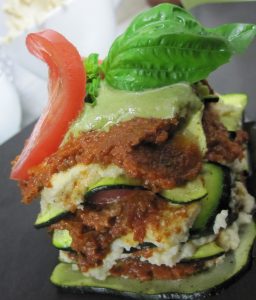 Given the above-mentioned difficulties, it’s easy to forget that Japan has not one but two homegrown vegetarian traditions. Several hundred years ago, the Japanese diet was nearly vegetarian naturally, consisting mainly of rice, vegetables, and some fish and seafood. Meat and dairy were practically unheard of. Due to the Buddhist principle of non-violence, in the year 676, Emperor Tenmu passed an ordinance that prohibited eating fish, shellfish, animal flesh, and fowl, rendering the whole country vegetarian for about a century.
Given the above-mentioned difficulties, it’s easy to forget that Japan has not one but two homegrown vegetarian traditions. Several hundred years ago, the Japanese diet was nearly vegetarian naturally, consisting mainly of rice, vegetables, and some fish and seafood. Meat and dairy were practically unheard of. Due to the Buddhist principle of non-violence, in the year 676, Emperor Tenmu passed an ordinance that prohibited eating fish, shellfish, animal flesh, and fowl, rendering the whole country vegetarian for about a century.
It was Dogen, a 13th century monk and founder of the Soto sect of Zen Buddhism, who formally established shojin ryori, a type of cooking that uses only plant-based materials. Even to this day shojin ryori remains a safe bet for vegetarians and vegans since it eschews animal products of any kind. The fact that shojin ryori is often served in temples only adds to its allure as a distinctly Japanese form of cuisine. However, the hefty price tags (Bon, in Tokyo’s Iriya neighborhood, for example, charges upwards of 7,000 yen for a lunch course) make shojin ryori an occasional treat rather than a source of daily sustenance.
Several hundred years after Dogen established shojin ryori, in the early 20th century, a young man named George Ohsawa became ill and sought guidance from Dr. Sagen Ishizuka, a medical practitioner who had earned a reputation for healing his patients with natural food rather than medicine. Ohsawa went on to become the founder of the macrobiotic movement, a lifestyle that favors whole grains and vegetables and eliminates eggs, dairy, meat, refined sugar, and flour. Macrobiotics is based on the principle that foods have yin or yang qualities, and that eating an unbalanced diet will create both a spiritual and physical imbalance. While the macrobiotic diet sometimes includes fish, for the most part it is a vegan, whole foods-based diet. Macrobiotics has become increasingly popular over the years, especially given some of its high-profile proponents like Madonna and Gwyneth Paltrow.
Since macrobiotics originated in Japan, the basic macrobiotic meal takes its cues from standard Japanese fare, minus the white rice and refined sugar. Macrobiotic cooking goes very easy on the salt and flavorings, which means that it can sometimes be a little lackluster or underwhelming. Luckily for those of us with palates that demand a bit more excitement, there are a few places that adopt the macrobiotic approach without compromising on flavor. One notable establishment is Chaya Macrobi, a California-inspired chain that serves up dishes like seasonal vegetable panini with pesto, hearty lasagna, and strawberry shortcake in several Tokyo locations.
Ditching the dashi
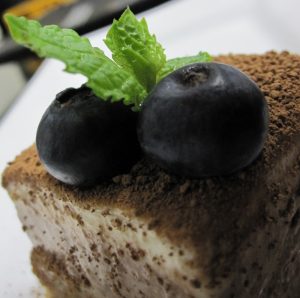 Walk into the average Japanese restaurant and you’re likely to have trouble finding a vegetarian or vegan dish, since fish-based dashi is the backbone of most soups and simmered dishes. However, dining out doesn’t have to be a nightmare. One of the best tools for demystifying meat-free eating is the Japan Vegan Restaurant Pocket Guide. Packed with bilingual descriptions of vegan and vegetarian restaurants throughout Japan, it also contains a picture guide to animal-free convenience store food and a language section teaching essential phrases like “Can you prepare this without fish stock?” and “Thank you for being so helpful.” After traveling extensively throughout the continent, author Herwin Walravens maintains that “Tokyo has the best veggie restaurants in Asia.” Some of his personal favorites include Azabu Juban’s Eat More Greens and Shin Okubo’s Saishoku Kenbi.
Walk into the average Japanese restaurant and you’re likely to have trouble finding a vegetarian or vegan dish, since fish-based dashi is the backbone of most soups and simmered dishes. However, dining out doesn’t have to be a nightmare. One of the best tools for demystifying meat-free eating is the Japan Vegan Restaurant Pocket Guide. Packed with bilingual descriptions of vegan and vegetarian restaurants throughout Japan, it also contains a picture guide to animal-free convenience store food and a language section teaching essential phrases like “Can you prepare this without fish stock?” and “Thank you for being so helpful.” After traveling extensively throughout the continent, author Herwin Walravens maintains that “Tokyo has the best veggie restaurants in Asia.” Some of his personal favorites include Azabu Juban’s Eat More Greens and Shin Okubo’s Saishoku Kenbi.
If you approach your meal with an open mind, you may find veg-friendly fare in the most unlikely of locations. Sisters Angi and Andi Wolfgang, co-founders of Nama Kiss raw dessert company, follow a raw vegan diet, eating primarily fresh fruits, vegetables, nuts, and seeds. Though they’ve had a their fair share of negative and frustrating experiences in Tokyo, they’ve discovered a hidden gem in the Sizzler salad bar. They’ve become such regular patrons there, in fact, that the staff have started addressing them by their names and welcoming them with open arms on their visits.
In this digital age, there are also plenty of online resources that make life much easier for Japan-based vegetarians and vegans. Vegetokyo.com is an English site packed with recipes, restaurant reviews, and other tidbits of interest to the Tokyo vegetarian community. Vege-navi.com is a bilingual site that lets you search by neighborhood and type of cuisine as well as other criteria such as whether you’d like to dine in a strictly vegan restaurant or just one that has meat-free options.
 For those times when you’d prefer to prepare a meal at home, there are several ways to get your hands on healthy fare. Saitama-based Alishan Organic Center offers Tengu Natural Foods mail order service, an excellent source of everything from agave syrup to veggie sausage. Andi Wolfgang also recommends the Munoyaku Mile website, a Chiba-based organic vegetable delivery service, which is cheaper than shopping in most supermarkets and shows up directly on your doorstep.
For those times when you’d prefer to prepare a meal at home, there are several ways to get your hands on healthy fare. Saitama-based Alishan Organic Center offers Tengu Natural Foods mail order service, an excellent source of everything from agave syrup to veggie sausage. Andi Wolfgang also recommends the Munoyaku Mile website, a Chiba-based organic vegetable delivery service, which is cheaper than shopping in most supermarkets and shows up directly on your doorstep.
Don’t discount your local supa, though. All Japanese supermarkets are stocked with countless soy products, fresh and dried shiitake mushrooms, and more seaweed than you can shake a stick at, meaning that it’s easy to whip up veg versions of your favorite Japanese dishes at home. For a super-simple dashi, just place a piece of konbu and a few dried shiitake mushrooms in water for a few hours. Use this to make miso soup, teriyaki sauce, and countless other dishes.
Meat-free meet and greet
Ready for your vegetarian adventure, but not sure where to start? Andi and Angi Wolfgang suggest stopping by one of the Vegan Meetup gatherings organized by Earl Brawley. The other attendees will be able to answer a lot of questions and they’re a wonderful source of recommendations. Of the gatherings, Brawley says, “You don’t have to be vegetarian or vegan to join; anyone is welcome. You just have to show up hungry!” To get started, simply create an account on meetup.com and sign up for the Tokyo Vegan Meetup.
Talk to most Japan-based vegetarians or vegans, and the message is clear: while following this diet in Japan is not without its difficulties, the advantages far outweigh the disadvantages. As Earl Brawley explains, “People tend to view veganism as being restrictive or extreme, but the way it makes you feel is quite the opposite. You feel clear-minded, have more energy, and feel a sense of freedom.”
Address Book
Mus Mus (organic restaurant)
web: https://japanrestaurant.net/en/shop/mus-mus/
GINZA KUKI (Japanese restaurant) Vegan course is available.
web: https://japanrestaurant.net/en/shop/ginza-kuki/
GENTLE (Italian restaurant)
web: https://japanrestaurant.net/en/shop/gentle-italian/
Bon (shojin ryori restaurant)1-2-11 Ryusen, Iriya, Taito-ku, Tokyo, tel: 03-3872-0234,
web: www.fuchabon.co.jp
Chaya Macrobi, locations in Shinjuku, Hibiya, Shiodome, and Yokohama, web: www.chayam.co.jp/restaurant
Eat More Greens, 2-2-5 Azabujuban, Minato-ku, Tokyo, tel: 03-3798-3191,
web: http://eatmoregreens.jp
Saishoku Kenbi, 2-21-26 Hyakunin-cho, Shinjuku-ku, Tokyo, tel: 03-5332-3627,
web: www.daisho-kikaku.com
Sizzler, various locations,
web: www.sizzler.jp
www.lucinalivefruitfully.com
Alishan Organic Center
http://store.alishan.jp
Munoyaku Mile
http://www.millet.co.jp/index_c-432.html
http://www.meetup.com/vegan-389
http://vege-navi.jp/
Quick Guide
Pescatarians – don’t eat any kind of meat or chicken, but do eat fish and seafood
Vegetarians – don’t eat meat or fish, but usually eat eggs and dairy
Vegans – don’t eat animal products of any kind, including eggs, dairy, and honey
Raw vegans – eat primarily fresh (not cooked above 48˚C) fruits, vegetables, nuts, and seeds
Story by Melissa Feineman
From J SELECT Magazine, November 2010

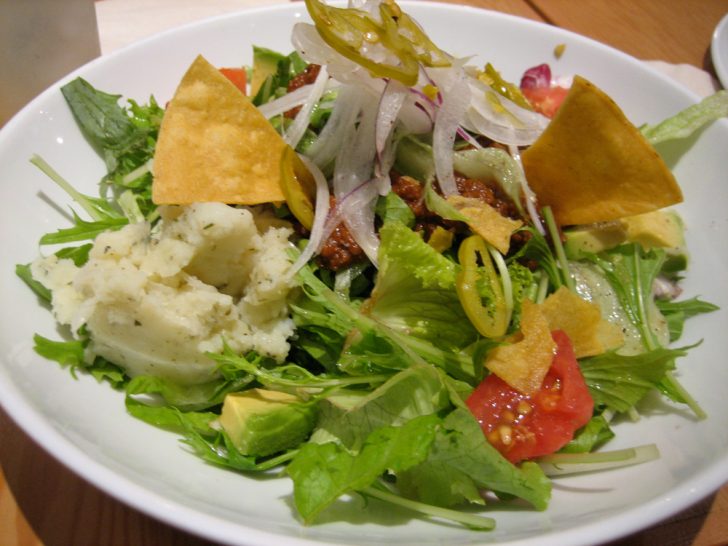





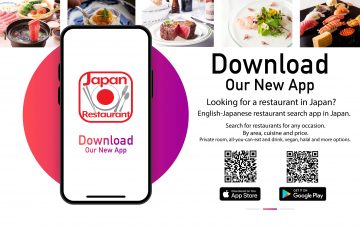


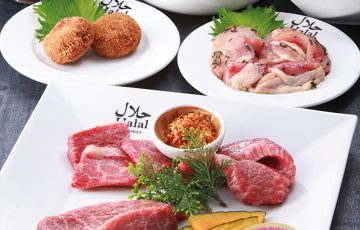

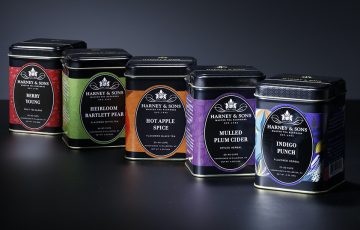


Recent Comments